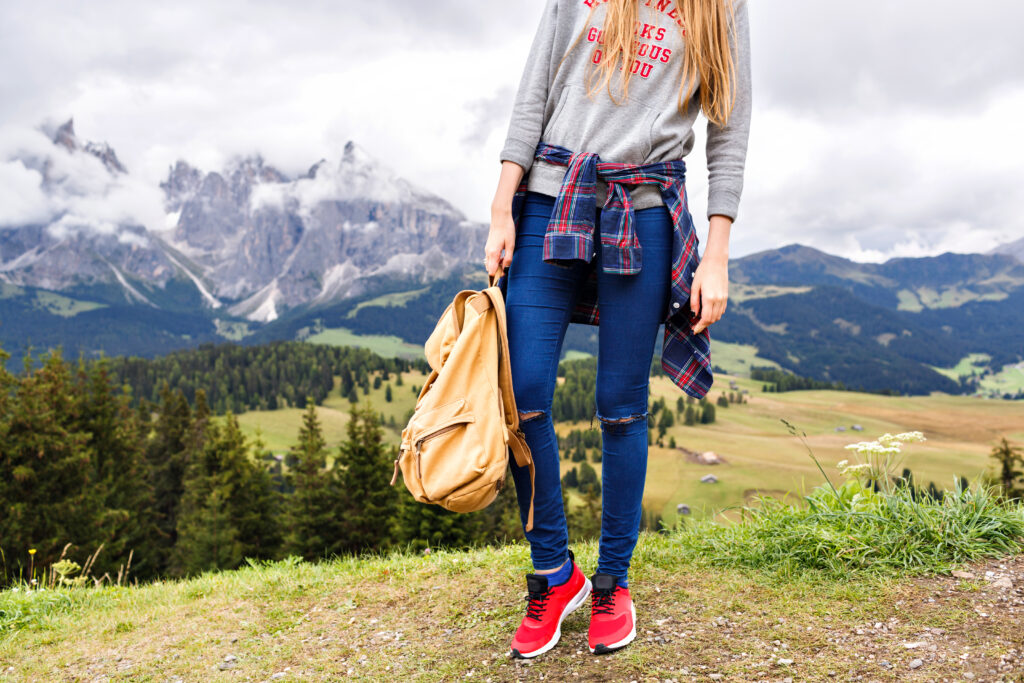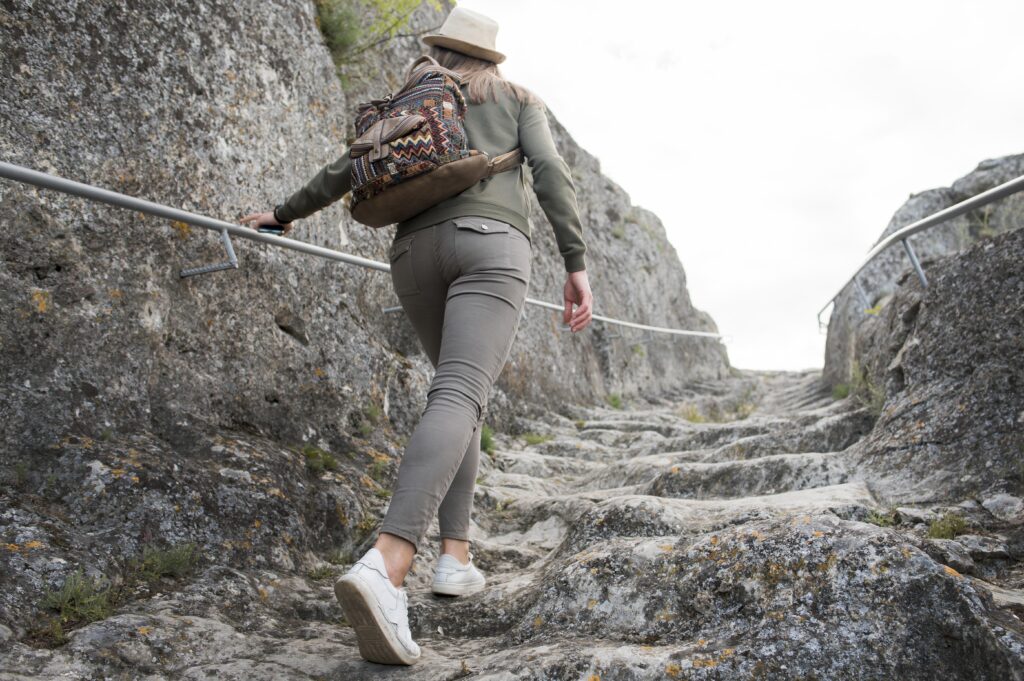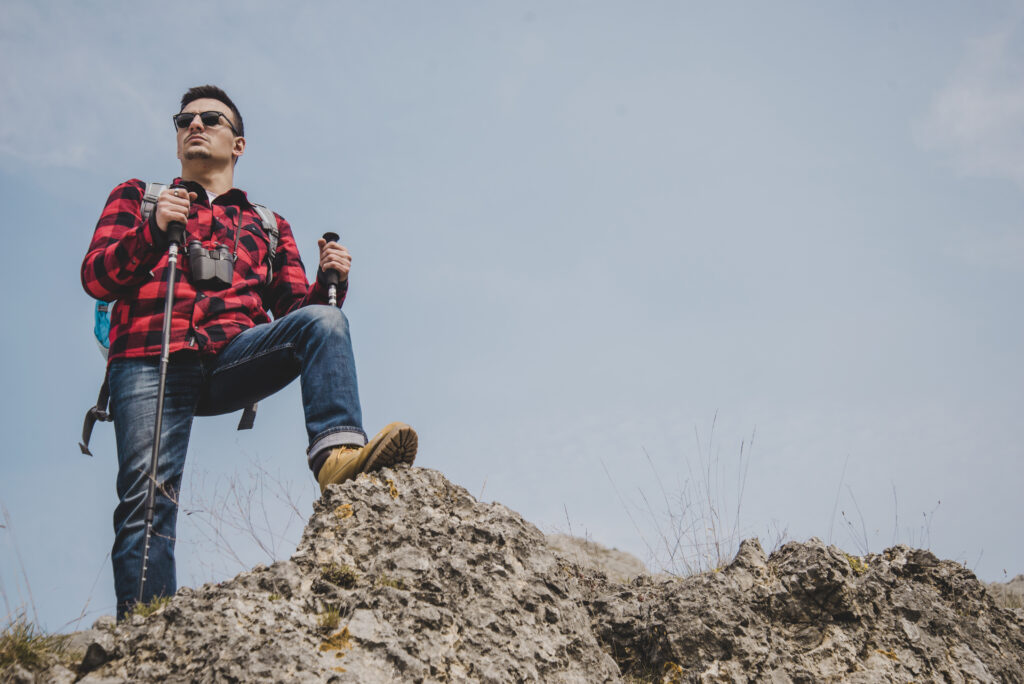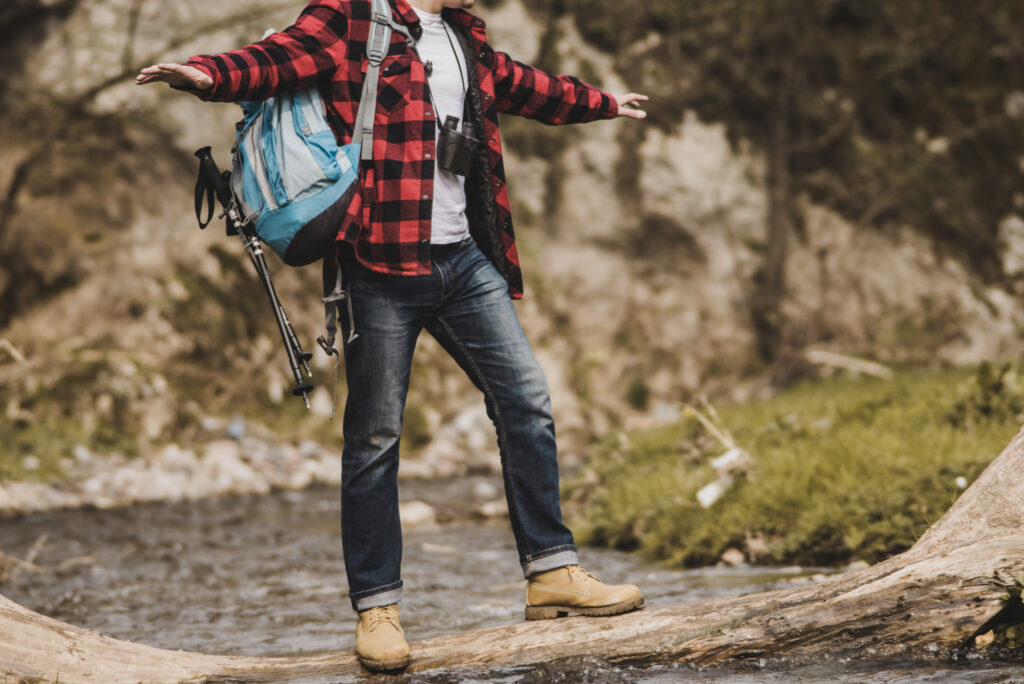Overview
The appropriate equipment can make a big difference in how much fun you have hiking. Hiking Pants are among the most important items of gear because they are so important for comfort, protection, and functionality. Selecting the ideal hiking pants for your needs might be difficult due to the wide range of possibilities. Everything you need to know about hiking pants will be covered in this extensive guide, including types, characteristics, and the best ways to choose and care for them.
Reasons Why Hiking Pants Are Important
More than just a piece of apparel, hiking pants are an essential part of your trekking equipment. They have an impact on your movement, comfort, and general safety when going on outdoor activities. Here’s why it’s imperative to spend money on high-quality hiking pants:
Ease and flexibility
Hiking pants should be comfortable and allow for maximum mobility. Because hiking entails a variety of physical activities, like walking, climbing, and bending, your pants must be able to support these motions. Important comfort elements consist of:
• Fit: It’s important that the waist, hips, and legs all fit properly. Pants shouldn’t be excessively tight or baggy.
• Stretch: Materials possessing stretch qualities provide increased comfort and flexibility.
• Breathability: Materials that are breathable aid in controlling body temperature and moisture.
Defense Against the Elements
The appropriate hiking pants provide protection from a range of environmental factors. This comprises:
• Weather Protection: Wearing waterproof or water-resistant Hiking Pants will keep you dry in the event of rain. Clothes that are wind-resistant shield against chilly breezes.
• UV Protection: Materials that are resistant to UV rays protect your skin from damaging sun exposure.
• Resistance to Abrasion: Sturdy pants guard against abrasions and scratches caused by flora and rocky terrain.
Useful Elements
Numerous innovations that are intended to improve ease and functionality are included in modern hiking pants. These attributes could consist of:
• Pockets: Several pockets to hold necessities like as a compass, snacks, and maps.
• Reinforced Areas: For increased durability, there are reinforcements on the knees and seat.
• Ventilation: Enhanced airflow and temperature control with zippered vents.
Hiking Pants Types
There are many different designs of hiking pants, each designed to fit particular needs and tastes. Selecting the ideal pants for your needs can be made easier if you are aware of the many types.

Trousers with a convertible design
Adaptable to different weather situations, convertible pants are multipurpose. The legs of the pants have a zip-off mechanism that allows you to change them from Hiking Pants to shorts. Advantages consist of:
• Temperature Adaptability: Perfect for days when the weather changes, including chilly mornings giving way to warmer afternoons.
• Versatility: Fit for a variety of trekking environments and climates.
Softshell Hiking Pants
Hiking Pants with a softshell are perfect for mild weather. They combine protection and flexibility, with the following features:
• Water-Resistance: Offers defense against moisture and mild rain.
• Breathability: This property lessens discomfort during strenuous activities by allowing sweat and moisture to escape.
• Flexibility: Materials with elasticity allow for a snug fit and unhindered mobility.
Waterproof Hiking Pants
Waterproof Hiking Pants are a must for hikes during rainy or damp weather.
• Waterproof Membranes: These include Gore-Tex and other comparable materials that keep out water while letting moisture out.
• Sealed Seams: Keep moisture from leaking through the seams.
Pants with insulation
Insulated Hiking Pants are made for the winter and for cold climates. Important characteristics consist of:
• Thermal Insulation: Provides warmth during extremely cold weather.
• Wind proofing: Prevents heat loss and provides protection from strong winds.
Leggings for Hiking
A more recent design that offers flexibility and a snug fit is the hiking legging. These work well for:
• Lightweight Hiking: Best suited for warmer weather and less strenuous trails.
• Layering: For extra warmth, wear it under other pants as a base layer.
Key Features to Consider
When choosing Hiking Pants, several features should be taken into account to ensure they meet your needs:
Material
The material of Hiking Pants affects their performance, durability, and comfort. Common materials include:
• Nylon: Known for its durability and abrasion resistance.
• Polyester: Lightweight and moisture-wicking, often used for its quick-drying properties.
• Spandex: Provides stretch for greater flexibility and comfort.
• Gore-Tex: A waterproof and breathable membrane that offers excellent protection against rain and wind.
Fit and Sizing
Fit is important for both comfort and functionality. Consider the following:
• Waist and Hips: Hiking Pants should fit well around these areas without being too tight or loose.
• Inseam Length: Ensure the length is appropriate to avoid restriction of movement.
• Adjustability: Features like adjustable waistbands and belt loops can help achieve a customized fit.
Breathability
Breathability is essential for comfort, especially during strenuous hikes. Look for:
• Mesh Linings: Enhance airflow and prevent overheating.
• Ventilation Zippers: Allow you to regulate temperature as needed.

Durability
Durability is important for withstanding rough terrain and frequent use. Look for:
• Reinforced Areas: Such as knees and seat, which undergo the most wear and tear.
• High-Quality Seams and Zippers: Ensure lifespan and prevent early disintegration.
Waterproofing and Windproofing
For bad weather circumstances, trousers should offer:
• Waterproof Coatings or Membranes: Such as DWR (Durable Water Repellent) treatments or Gore-Tex.
• Windproof Fabrics: To guard against cold winds and reduce heat loss.
Top Brands for Hiking Pants
Several brands are noted for their high-quality Hiking Pants. Here’s a look at some notable brands and what they offer:
Columbia
Columbia is recognized for its innovative outdoor gear, including Hiking Pants with:
• Omni-Tech Waterproofing: Reliable protection against rain and dampness.
• Omni-Shade UV Protection: Shields your skin from damaging UV radiation.
The North Face
The North Face offers a selection of Hiking Pants noted for:
• Durability: Reinforced fabrics and structure for long-lasting usage.
• Performance: Features like moisture-wicking and breathability for greater comfort
.
Arc’teryx
Arc’teryx is famous for high-performance gear developed for dedicated hikers.
• Advanced Materials: Gore-Tex and other high-tech textiles for enhanced protection are among the features of their pants.
• Innovative Design: Prioritized durability, comfort, and practicality.
Argentina
Patagonia prioritizes eco-friendly materials and sustainable practices. Among their hiking pants are:
• Sustainable Fabrics: such organic cotton and recycled polyester.
• Fair Trade certification and other ethical practices are examples of ethical production.
Comparing Hiking Pants: A Comprehensive Examination
So that you may choose wisely, let’s evaluate several hiking pants according to a number of factors:
Coziness
• Convertible Trousers: Provide versatility, but some zippers may be uncomfortable.
• Softshell Trousers: Made of breathable fabric, these pants offer exceptional comfort and flexibility.
• Waterproof Trousers: Although they might not be breathable, they are necessary in damp weather.
• Insulated Trousers: Although they are very warm, they can be heavy and less pliable.
• Hiking Leggings: These are quite flexible and comfortable, but they could not offer enough protection in rough terrain.
Sturdiness
• Convertible Trousers: Sturdy, but over time, seams and zippers may break.
• Softshell Trousers: They are usually strong, albeit they might not be as sturdy as waterproof ones.
• Waterproof Trousers: Exceptionally robust, with reinforced regions for tough environments.
• Insulated Trousers: Not as prone to wear in active environments, but still durable in colder climates.
• Hiking Leggings: Because of their lightweight material, they might not be as durable as other sorts.
Features
• Convertible Trousers: Adaptable with detachable legs, but maybe without additional functions.
• Softshell Trousers: Often come with several features including breathability and pockets.
• Waterproof Trousers: Essential for damp weather, generally with minimum additional features.
• Insulated Trousers: Focus on warmth, often with fewer features.
• Hiking Leggings: Generally lightweight, basic, and feature-free.
Actual User Feedback and Experiences
For a comprehensive viewpoint, consider the following observations made by actual users of different hiking pants:
Hiking Pants with a convertible design
Customers value convertible pants’ adaptability, especially in unpredictable weather. Many emphasize how convenient it is to zip off your legs as the temperature rises. Some users do point out that over time, the zippers may become less reliable.
Softshell Pants
Softshell pants are commended for their comfort and flexibility. Users think they’re perfect for a variety of terrains and mild weather. Stretch and breathability are frequently cited as important advantages. However, some users claim that they might not be completely waterproof in really rainy conditions.
Waterproof Pants
Customers appreciate waterproof pants for their ability to withstand rain and other damp weather. For serious hikers who frequently encounter rain, they are frequently recommended. Some users feel that they are less breathable, which increases the risk of overheating when engaging in vigorous activities.

Pants with insulation
Insulated trousers receive positive feedback for their warmth and protection in cold weather. For winter hikes, users consider them indispensable. Some users have complained that they can be less flexible and bulky, which can make it harder to move on more difficult trails.
Leggings for Hiking
Hiking leggings are appreciated for their comfort and flexibility. Users find them suitable for lightweight hikes and layering under other trousers. However, they may not provide enough protection for more rugged terrains or extreme weather conditions.
Expert Tips for Choosing Hiking Trousers
To help you select the best hiking trousers for your needs, consider the following expert tips:
Assess Your Needs
• Determine the Conditions: Consider the typical weather conditions and terrain you will encounter.
• Evaluate Your Activity Level: Choose trousers that match the intensity and duration of your hikes.
Prioritize Comfort
• Try Before You Buy: If possible, try on trousers to ensure they fit well and offer the desired comfort.
• Check Flexibility: Ensure that the trousers allow for a full range of movement.
Consider Features
• Look for Versatility: Features like convertible legs and multiple pockets can enhance functionality.
• Check for Reinforcements: Reinforced areas can provide added durability in high-wear spots.
Invest in Quality
• Choose Reputable Brands: Brands known for their quality and performance are more likely to offer reliable products.
• Don’t Compromise on Material: High-quality materials may cost more but offer better performance and durability.
Care and Maintenance of Hiking Pants
Proper care and maintenance can extend the lifespan of your Hiking Pants. Follow these guidelines:
Washing
• Follow Manufacturer’s Instructions: Always adhere to the washing instructions provided by the manufacturer.
• Use Mild Detergents: Avoid strong detergents and fabric softeners that can degrade waterproof coatings.
• Wash with Cold Water: Cold water helps protect the integrity of the fabric and coatings.
Drying
• Air Dry: Lay trousers flat or hang them to air dry. Avoid direct sunlight to prevent fading.
• Low Heat: If using a dryer, opt for a low-heat setting to avoid harming the cloth.
Repairs
• Address harm promptly: Repair small tears and holes to prevent further harm.
• Seek Professional Repairs: For substantial damage, consider professional repair services.
Common Mistakes to Avoid
When selecting Hiking Pants, avoid these typical mistakes:
Ignoring Fit
• Fit Over Style: Prioritize fit and comfort over style. Ill-fitting Hiking Pants might hinder your mobility and comfort.
Examining Content
• Aligning Content with Situations: Make sure the content is appropriate for the circumstances you may face. For instance, avoid wearing thin Hiking Pants in extremely cold or damp weather.
Ignoring Features
• Taking Into Account Essential Features: You can improve your trekking experience significantly by utilizing features like pockets, breathability, and strengthened regions. Don’t ignore the pragmatics.
Upcoming Patterns in Hiking Pants
In the realm of hiking pants, a few trends are emerging as technology and design continue to advance:
Eco-Friendly Resources
• Sustainable Textiles: The usage of recycled and sustainable materials in hiking pants is becoming more and more popular. Brands are paying more and more attention to lessening their environmental effect.
Advanced Technologies
• Smart Fabrics: Wearable technology and smart fabric innovations are finding their way into hiking gear to improve usefulness and performance.
Personalization
• Tailored Fit: More alternatives are now available thanks to advancements in fit and sizing technology, guaranteeing that hikers will receive Hiking Pants that precisely fit and satisfy their unique requirements.
In summary
Hiking pants selection is an important choice that affects your performance, comfort, and pleasure of the route as a whole. You may choose a product that best meets your needs and tastes by being aware of the different kinds, features, and brands.
Purchasing hiking pants that fit well and are of good quality guarantees that you will be ready for any trip, whether it involves crossing difficult terrain, discovering new places, or taking a leisurely trek. Knowing that you’re prepared for success when you wear the proper pants allows you to concentrate on the excitement of hiking and the beauty of the outdoors.
Happy hiking!
